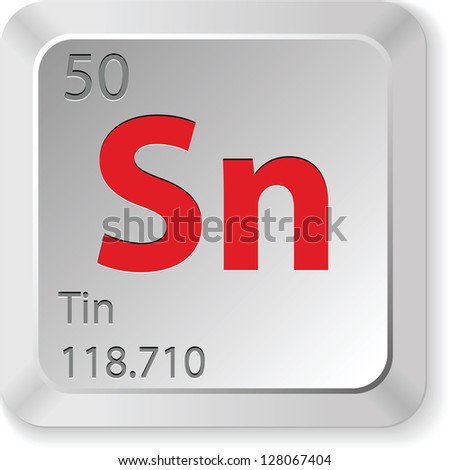Tin periodic table
Tin is a chemical element with symbol Sn (from Latin: stannum) and atomic number 50. It is a post-transition metal in group of the periodic table. It is obtained chiefly from the mineral cassiterite, which contains tin dioxide, SnO2.
Tin shows a chemical similarity to both of its neighbors in group 1 germanium and lea and . Sources, facts, uses, scarcity (SRI), podcasts, alchemical symbols, videos and images. Tin : Tin ( Sn ), a chemical element belonging to the carbon family, Group (IVa) of the periodic table.

It is a soft, silvery white metal with a bluish tinge, known to the. EwCPJOP0Mg Similares jul. Subido por Periodic Videos How did Tin help make better swords? And why is a tin can called a tin can?
More links in description below. Origin of name: from the Anglo-Saxon word tin (the origin of the symbol Sn comes from the Latin word stannum meaning tin ). Tin was known to the ancients and is mentioned in the Old Testament. Early metal workers found it too soft for most purposes but mixed with copper it gives the alloy bronze, of Bronze Age fame.
Oxygen in solution accelerates the attack.

When heated in air, tin forms Sn which is feebly aci forming stannate salts with basic oxides. The most important salt is the chloride, which is used as a reducing agent and as a . Atomic Number : Atomic Radius : 2pm (Van der Waals) Atomic Symbol : Sn Atomic Weight : 118. Find physical data, electron configuration, chemical properties, aggregation states, isotope data (including decay trees) as well as some historic information. Tin has been known since ancient times.
Color: silvery (left, beta) or gray (right, alpha). Classification: post-transition metal. Organic tin compounds may be highly toxic. Tin is principally found in the ore cassiterite (SnO2) and stannine (Cu2FeSnS4).
It is used as a coating for steel cans since it is non-toxic and non-corrosive, also in solder ( Sn :Pb), bronze ( Sn :Cu) and pewter. Stannous fluoride (SnF2), a compound of tin and . Atomic number : Relative atomic mass : 118. Sn ) Metalloid element of group IV of the periodic table , known from ancient times. Its chief ore is cassiterite (an oxide). Soft, malleable and resistant to corrosion, tin is used as a protective coating for iron, steel, copper and other metals, and in such alloys as solder, pewter, bronze and type metal.
Tin is not easily oxidized and resists corrosion because it is protected by an oxide film. It is used to coat other metals to prevent corrosion and is a part of numerous alloys, such as soft solder, pewter, type metal , . Tin ( Sn ) has an atomic number of fifty, and fifty protons in the nucleus.

It is typically a silvery white color and is highly malleable. Discovery: Known since ancient time. Word Origin: Anglo-Saxon tin , Latin stannum, both names for the element tin.
En caché Traducir esta página Tin is used in for can coating: tin -plated steel containers are widely used for food preservation. Tin alloys are employed in many ways: as solder for joining pipes or electric circuits, pewter, bell metal, babbit metal and dental amalgams. The niobium- tin alloy is used for superconductiong magnets, tin oxide is used for . OIM orientation maps from thermomechanically cycled Tin -Silver-Copper solder balls with internal cracks observed in some cases. Maps of the orientation of the c-axis of Sn for a row of eleven cross sectioned SnAgCu solder balls in a thermomechanically cycled package.
Our tin page has over 2facts that span 1different quantities. Each entry has a full citation identifying its source. Thus tin , which has fifty protons, has an atomic number of 50. Changing the number of neutrons alters the isotope of the element.
Elements usually exist as several isotopes.